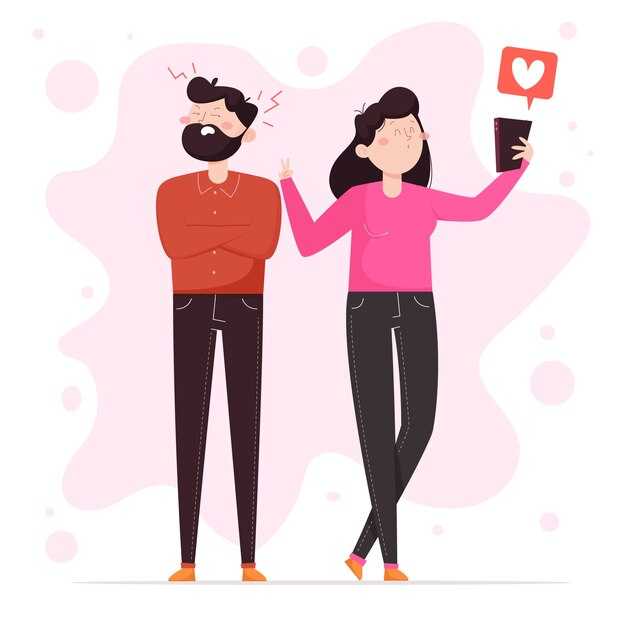Some people insist that cancel culture is a myth or even a necessary corrective, and curiously those voices are often the same ones who have a stake in dragging others through the court of public opinion. They argue that people who do harm should be held to account — and almost everyone would agree that breaking the law should be answered for. The problem is something else: too many of these online executions happen without solid evidence, with a brutality that ignores the full story or the person involved, and with an attitude that assumes one’s own viewpoint is the only valid one. That, in itself, is an injustice. It’s less about repairing the world than about an old, raw emotional disturbance. For several reasons, the number of people who are emotionally dysregulated and the intensity with which they express themselves have risen dramatically, and most observers can see that. I believe much of this springs from trauma: people who lash out as a way to self-treat depression, or people whose anger has become a tonic that feels better than the freeze, the despair, or the numbness. Many of the social issues we debate are presented as if there is a single correct answer; anyone who disagrees is labeled stupid or evil. That kind of charged certainty feels ecstatic — like religious fervor — and it can override what your eyes and ears tell you. The high-voltage excitement of outrage is more appealing to many than the hard work of grief or healing. Yet a lot of what passes for “holding someone accountable” in cancel culture is rumor, gossip, or exaggeration. Sometimes people knowingly repeat false or inflated claims because the act of destroying someone else’s reputation feels powerful; that deliberate misrepresentation has a name — defamation — and for centuries it’s been treated as a grave moral wrong. Lately, though, it’s become commonplace. There’s a kind of perverse game here, invented by those who profit from humiliating others: everyone starts with some imaginary score, and you “win” by circulating accusations, pushing people to hate the chosen target, and destroying that person’s livelihood so the accusers can appear important to each other. Often, however, when participants finally stop and feel the moral weight of what they’ve done, their conscience wakes up and they pull back. The fact that people can yell at others from behind anonymity makes it easy — the words don’t have to be true or provable. And because many are terrified of being singled out themselves, no one defends the person under attack: if you stand up for someone being bullied, you risk becoming the target. That dynamic is exactly what malicious gossip seeks to create; it needs defenders to be punished so the mob sees the cost of dissent. This pressure is intense. For those who were traumatized as children, the prospect of losing everything — friends, work, a fragile sense of safety — and sliding back into old, isolated circumstances is so terrifying that they often keep their heads down or deny the reality in front of them. Public shaming becomes self-perpetuating: once a wave of hatred starts, it’s hard to stop. The longer it rolls, the more distorted thinking becomes, the higher the cost to speak out, and the harder it is to act with integrity. When I speak of cancel culture here, I am not talking about legitimately exposing criminal behavior or prosecuting a crime; that is different, and yes, such efforts sometimes attract cultish defenses of perpetrators. But cancel culture, as commonly practiced, focuses on murky things — opinions, perceived differences in values, identity, or belonging. The logic often becomes: you are not like me, therefore you must be evil, while everyone who agrees with me is necessarily good. A correspondent once described what it felt like to be swept up in a group that systematically hunted reputations online. At first, joining felt empowering and righteous: the accusations, however extreme, were framed as necessary to stop greater harms. That’s how many abusive, cult-like movements begin — with a heroic narrative that attracts good people. Over time, she noticed a growing shame about the damage she and her group were doing. The initial thrill faded, but to keep feeling important she found she had to keep participating; if she stopped, the same friends would turn their wrath on her. Peer pressure became coercion, then hostage-taking: lie, echo the attacks, or be next. Eventually she reached a breaking point. She left the group, cut ties, and was terrified and isolated. Initially she felt the relief and moral clarity that comes from walking away from wrongdoing, but she also lived for a long time with a constant, paranoid sense of being monitored — that a former friend might pounce at any moment for the tiniest misstep. That kind of chronic fear resembles complex post-traumatic stress: after repeated psychological assaults, you come to feel unsafe in ordinary life, even for being yourself or expressing a mild opinion. At first it can seem like paranoia, but the “gang” can really exist — they are addicts of the cruelty game. Whether driven directly by narcissists or by people enlisted by a narcissistic leader, the phenomenon is real. So what do we do? First, stop taking part in the public pillorying of anyone accused of something you did not witness personally or did not verify with due diligence — that means checking multiple reliable sources, not passing along the usual rumor mill. Even if an accusation is true, you don’t have to amplify it recklessly. Before repeating anything in public or online, run the Socratic test: is it true? Is it kind? Is it necessary? Most of what fuels outrage is what I call “rage porn” — content engineered to split people apart because division sells and makes manipulators powerful. If you want to strengthen your community, be a healer of division rather than its author. Ask yourself why you’re tempted to repeat an attack. Often the payoff is a fleeting bump to a fragile self-worth, a counterfeit feeling of importance achieved by diminishing someone else. That high is cheap and destructive, like any addictive stimulant: transient, harmful, and ultimately undoing. Even if past traumas help explain why someone lashes out, they do not excuse the social violence it produces. If another person’s lifestyle, beliefs, or identity bothers you, talk to them as a human — read sources outside your usual news bubble, try to understand why views differ, and recognize that most people want much the same basic things for themselves and their families. Sometimes real conspiracies or harms exist, but more often the differences are over emphasis and values. Practicing curiosity, restraint, and common humanity will do far more to build a safer, saner public square than piling on to crush a person whose reputation is the latest click-for-profit target.
What is the right way to raise children? How should they be kept healthy? What is the correct response to injustice in the world? How should childhood post-traumatic stress be treated? There are no simple, one-size-fits-all answers to these questions. The issues are complicated, deeply rooted, and open to debate. Progress cannot be decreed into existence. Silence, imposed on people, threatens their means of living and crushes their spirits; in contrast, the free exchange of ideas, the ability to express oneself, to learn and to argue, creates space for everyone within a shared stream of collective awareness. Total agreement is not required — in fact, demanding perfect unanimity often embodies the essence of harm. It is the hallmark of authoritarianism, fuels cancel culture, and, incidentally, gives narcissists their lifeblood. Sound, thoughtful guidance tends to arise from inclusivity and freedom of expression. Stand up for those who have been silenced. Speak out when you witness injustice. Be truthful, but guard against letting a passion for truth turn into a compulsion to force others to accept your perspective. There is room for your views and room for theirs. Yes, there are costs, but consider the alternative. Allowing for difference is how the healthiest societies have flourished. Some listeners may react by attacking or by assuming the motivation is to rally others in hatred of perceived enemies — that is a misunderstanding. The real adversary is often the one inside us all; everyone is vulnerable to this. If you have contributed to harming others in this way, it is never too late to step back. Do so calmly at first if necessary; take time to clear your mind and seek support. If someone you know is being targeted, offer help, have their back, and speak up when others face defamation. Hopefully that situation never arises — but if you become the target, declare what you believe is right, because there is risk involved. When enough people speak together, that risk becomes shared, diffused, and safer for others to join in. This collective response is what a healthy culture looks like, and not coincidentally it resembles the process of healing from trauma: when trauma-driven behaviors no longer control people, men and women regain the freedom to express their identities. They may not always be kind or correct, and they are certainly not free to commit crimes, but they can think independently — and no system that suppresses that capacity can produce anything good. Consider, then, this picture of life when actions driven by trauma no longer dominate: harming others in that manner is itself a symptom of unresolved trauma. There is a set of signs that indicate healing has already begun; it is happening for many, and people find learning about those signs very useful. It can be reassuring to check the boxes and acknowledge that things are moving in the right direction, even if that stage has not yet been reached. The related resource can be downloaded here, and further guidance will be available soon.
Practical steps you can take now:
- Pause and verify. Before sharing or amplifying an accusation, pause. Try a 24-hour rule: wait a day, check two or more independent, reliable sources, and consider whether you actually have first‑hand evidence. In most cases, restraint prevents harm.
- Widen your sources. Read beyond your usual feeds. Seek reputable reporting, original documents, or primary witnesses rather than memes, anonymous threads, or recycled outrage posts.
- Apply an expanded Socratic test. Ask: Is this true (as best I can verify)? Is this kind? Is this necessary to protect someone or prevent harm? Is this proportionate? Is my repeat likely to help or to inflame?
- Protect privacy and dignity. If someone is accused of wrongdoing, consider how public exposure will affect victims, bystanders, and families. When safety requires public warning, pursue it responsibly; otherwise, respect privacy and due process.
- Document and preserve evidence. If you are targeted or witness defamation, preserve records (screenshots, timestamps, saved URLs) and avoid deleting material that could be important for later legal or restorative processes.
- Support targets safely. Offer private support first — check how the person wants help, and respect their wishes. Public solidarity can reduce isolation, but it can also escalate risks; coordinate with the person affected.
- Use platform tools wisely. Report harassment and doxxing to platforms, but also learn how moderation policies work so your reports are specific and evidence-based.
How to help as a bystander or community member:
- Speak up with facts, not invective. Calm corrections and requests for due process can change the tone of a conversation. Saying “Let’s check the facts first” or “Has anyone reached out privately?” models restraint.
- Create shared norms. In workplaces, schools, and online groups establish clear norms about how allegations are handled — who investigates, what steps are taken before public statements, and how support will be offered to everyone involved.
- Form protective coalitions. If you notice targeted shaming, join others to offer proportionate, lawful support for the target. Shared risk is less isolating and makes it safer for people to stand against mob cruelty.
When accountability is needed, consider alternatives to public shaming:
- Restorative processes. Community-led or mediated conversations that center responsibility, restitution, and repair can produce meaningful change without destroying lives.
- Formal investigations. Encourage official, impartial review where allegations are serious; allow due process to inform action.
- Clear consequences, not spectacle. Sanctions should be proportionate, transparent, and focused on repair and prevention rather than humiliation.
Trauma‑informed and clinical guidance:
- Recognize signs of complex trauma. Chronic hypervigilance, disproportionate shame, social withdrawal, and persistent fear of retribution are common after prolonged social assaults. These resemble complex PTSD and deserve professional care.
- Evidence-based treatments. For childhood or complex trauma, evidence-based approaches include Trauma-Focused Cognitive Behavioral Therapy (TF-CBT), Eye Movement Desensitization and Reprocessing (EMDR), and therapies that teach emotion regulation such as Dialectical Behavior Therapy (DBT). Seek licensed clinicians trained in trauma work.
- Parenting and education. Teach children critical thinking, empathy, and digital responsibility. Model admitting mistakes, making reparations, and tolerating difference.
If you are being targeted:

- Do not retaliate publicly. Emotional responses can be used against you. Pause, document, and consult trusted advisors or legal counsel.
- Preserve evidence and consult professionals. Save messages and posts, report to platforms, and consider consulting a lawyer if defamatory falsehoods have been spread.
- Lean on trustworthy supports. Reach out to friends, family, or a mental health professional. Isolation intensifies harm; connection helps resilience.
Signs that healing is occurring (what to notice and cultivate):
- Less immediate reactivity to perceived slights; an increased ability to pause and reflect.
- Willingness to hear dissenting views without labeling people as wholly evil.
- Ability to apologize and make reparations when harms are real.
- Reduced appetite for public humiliation as a source of self-worth.
- Stronger, healthier relationships that are not built on shared hatred.
Resources and next steps:
- For immediate mental health support, contact local crisis lines or national helplines in your country. If you are in the United States, organizations such as SAMHSA and NAMI provide directories and support; other countries have similar resources — search for “crisis helpline” plus your country name.
- For legal concerns about defamation, harassment, or doxxing, consult a licensed attorney who specializes in media, employment, or cyber law. Many consumer legal clinics offer initial guidance or referrals.
- For communities and organizations: develop clear policies about handling allegations, invest in trauma-informed training for leaders, and create accessible restorative processes.
Finally, remember that reducing the harm of cancel culture is both an individual and collective task. Practice curiosity, verify before sharing, prioritize dignity, and support systems that enable accountability without cruelty. When communities choose repair over revenge, they make space for real growth — and they deprive malignant narcissists and cruelty-addicts of the spectacle they crave. Small acts of restraint and kindness scale: they change the norms that decide whether someone will be ruined or offered a path to make amends and heal.


 Why Malignant Narcissists Love CANCEL CULTURE">
Why Malignant Narcissists Love CANCEL CULTURE">

 What REALLY Makes Avoidants DESPERATELY MISS You And Come Back? | Avoidant Attachment Style">
What REALLY Makes Avoidants DESPERATELY MISS You And Come Back? | Avoidant Attachment Style">
 Como el trauma dificulta reconocer lo que realmente está sucediendo">
Como el trauma dificulta reconocer lo que realmente está sucediendo">
 Angry, Dysregulated, Can’t Think? Here’s How to Feel Better ASAP!">
Angry, Dysregulated, Can’t Think? Here’s How to Feel Better ASAP!">
 Do you KNOW what you NEED in your Relationship?">
Do you KNOW what you NEED in your Relationship?">
 What you DON’T KNOW, still hurts your Marriage!">
What you DON’T KNOW, still hurts your Marriage!">
 The Day You Reject the Avoidant… Is the Day them Start Begging | Avoidant Attachment Style">
The Day You Reject the Avoidant… Is the Day them Start Begging | Avoidant Attachment Style">
 People who LOVE you CARE about your NEEDS">
People who LOVE you CARE about your NEEDS">
 Learn to Disappoint Avoidants. The Truth About Real Love | Avoidant attachment style">
Learn to Disappoint Avoidants. The Truth About Real Love | Avoidant attachment style">
 How Trauma Makes Your Productivity Come in BURSTS">
How Trauma Makes Your Productivity Come in BURSTS">
 What REALLY Happens in an Avoidant’s Mind When You Go Silent? | Avoidant Attachment Style">
What REALLY Happens in an Avoidant’s Mind When You Go Silent? | Avoidant Attachment Style">